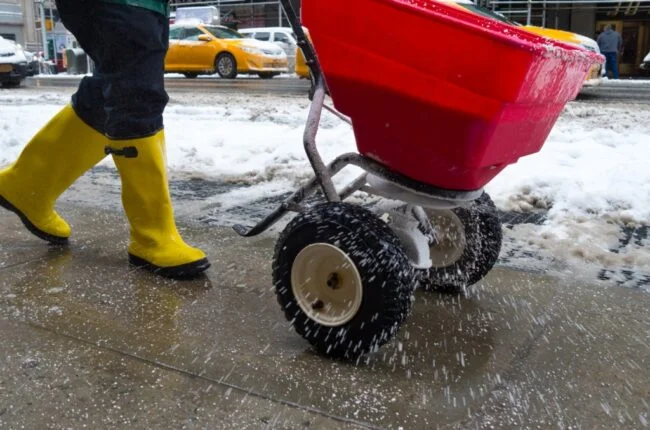Safeguarding your walkways, driveways, and outdoor surfaces from the perils of ice is a crucial winter task. The key to effective ice removal lies in the strategic use of ice melt—a chemical solution that disintegrates the ice bonds, rendering surfaces safer and more manageable. However, mastering the art of using ice melt requires an understanding of various products designed for specific purposes and surfaces. Here’s a guide to ensure the safe and efficient removal of winter’s slippery challenge.
Explore the Ice Melt Options
Diverse situations call for different ice melt solutions. Liquid formulas, pellets, or granules—there’s a variety of products tailored to specific surfaces, temperatures, and safety concerns for pets and children. Scrutinize product labels to grasp each product’s unique features and choose what aligns best with your needs.
Distinguish Ice Melt from Rock Salt
While both combat ice, rock salt and ice melt are distinct entities. Rock salt is a mineral composed of sodium chloride, while ice melt blends various chemicals, usually centered around sodium chloride. Ice melt outshines rock salt with its fast-acting, enduring nature, and efficacy in extreme cold.
Mind the Temperature Ratings
Different ice melt formulations cater to different temperature ranges. If your locale experiences winter temperatures below 20 degrees Fahrenheit, ensure the chosen ice melt operates effectively under those conditions. Reading labels becomes crucial in selecting a product that aligns with your region’s cold climate.
Consider the Surface Composition

Driveways, sidewalks, decks, and porches boast varied materials—concrete, asphalt, wood, and metal. Applying the wrong product might lead to unintended damages. Follow package instructions diligently, choosing the appropriate ice melt for the specific surface to prevent any inadvertent harm.
Apply Moderately, Not Excessively
More doesn’t always mean better. Excessive application of ice melt can wreak havoc on walkways, driveways, and even harm the environment through runoff and groundwater contamination. Abide by product directions to avoid overusing and causing unintended consequences.
Ensure Safety Around Children and Pets

Certain ice melt products contain chemicals that can pose risks if ingested. Take precautions to keep ice melt away from children and pets, as accidental ingestion may lead to irritation. Be mindful of secure storage and application to prevent any unintended contact.
Prevent Indoor Tracking
The residue from ice melt can find its way indoors, causing damage and creating slippery surfaces. Employ floor mats strategically—both outside and inside entrances—to minimize tracking. Some ice melt formulations are designed to be effective without compromising on indoor cleanliness.
Preemptive Action is Key
Don’t wait for ice to form before securing your ice melt supply. It’s prudent to have a stockpile ready before a storm hits. Applying ice melt before the ice forms helps prevent bonding, creating channels that simplify the overall ice removal process.
In mastering these tricks, you’ll not only navigate winter safely but also contribute to environmental preservation and the well-being of your outdoor and indoor spaces. As you embrace these guidelines, winter’s icy challenges become more manageable, ensuring a safer and more secure environment for everyone.
image source : istockphoto










